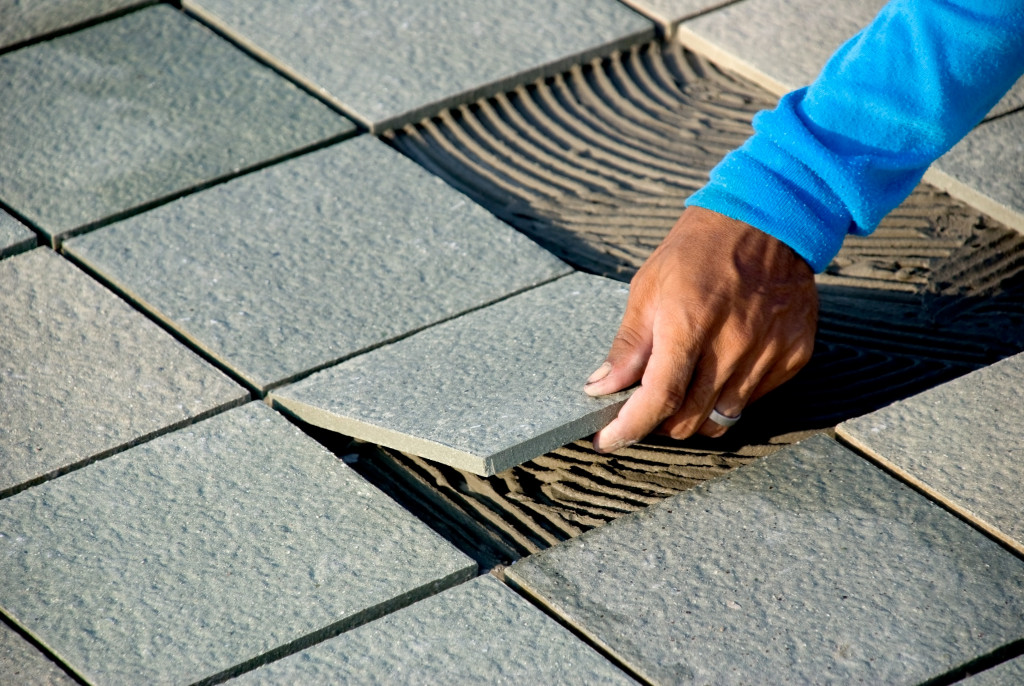Today, many areas in the UK are experiencing a massive overhaul as part of either gentrification or urban regeneration. Some real estate owners and office managers, for example, are retrofitting old or historical buildings, transforming them into commercial complexes.
But how does one often think about sustainability while doing these changes, especially when it comes to flooring? If the answer is occasionally, they might be doing more harm to the environment, translating to high direct and indirect costs later.
Should Businesses Replace or Refinish Flooring?
During renovations, businesses rely on floor fitters for significant decisions, such as replacing or refinishing old floors. The IVL Swedish Environment Research Institute, though, highly recommends renewing the floors instead to help save the environment.
The organization performed a study wherein they tried to analyze the impact of refinishing hardwood or resilient floors compared to refinishing them. The result showed that doing the latter can:
- Decrease the carbon footprint of the facility by 92 percent compared to replacing the floor
- Improve savings of resources by as much as 95 percent
But how does flooring affect the environment in the first place? The Cleaning & Maintenance Management article provided some ideas:
1. Discarded Flooring Materials Usually End Up in Landfills
According to data, the average size of a landfill is 600 acres. The UK has over 500 of these around the country. Although the number has significantly dropped in recent years, these are still lands that the government and the private sector can convert for other purposes.
These include building residential properties that can help address a housing shortage. The BBC once reported that the UK had created three million fewer homes for the past three decades. In the meantime, the population increased by almost 10 million.
Further, not all flooring materials decompose. Carpet, for example, can take years to break down. Vinyl takes even longer. So if a business opts to replace flooring materials instead of refinishing them, they would be adding to this environmental problem.
2. Manufacturing Processes Can Pollute the Air and Water
The manufacturing process of flooring can release toxins into the air and water. These pollutants include volatile organic compounds (VOCs) and heavy metals.
When inhaled, VOCs can cause various health problems such as eye, nose, and throat irritation, headaches, dizziness, and nausea. Prolonged exposure can also lead to more severe cancer and respiratory illnesses.
On the other hand, heavy metals can contaminate air, soil, and water when accidentally released. They pose a significant health risk because they are easily absorbed in human tissues after being inhaled or ingested. For instance, these ions can affect the brain development of fetuses, infants, and young children.
3. Manufacturing Flooring Can Use Up Natural Resources
The manufacturing of flooring also requires the use of natural resources. These include timber, oil, and plastic. The harvesting of wood, for example, can damage forests. This is because the extraction process often requires clear-cutting, which leads to the loss of trees and other plant life.
As for oil and plastic, these are fossil fuels that release greenhouse gases when burned. They also do not decompose naturally, even if they become waste.
4. Flooring Can Contain Harmful Chemicals and Other Materials

The composition of some flooring materials also poses various health concerns. These include the following:
- PVC is a soft, plastic material that releases toxic chemicals such as dioxins and phthalates when burned. Long-term exposure can lead to health problems, including congenital disabilities and cancer.
- PBDE: once widely used as a flame retardant, this chemical has been linked to health concerns such as developmental problems and thyroid disruption.
- Formaldehyde: this gas is often used to manufacture flooring materials because it helps prevent bacterial growth. When inhaled, though, it can irritate the eyes, nose, and throat. It can also lead to more serious conditions such as asthma and certain types of cancer.
A study in 2021 revealed that more people globally prefer greener products. They are willing to spend more on sustainable goods and are more likely to support businesses that use them or advocate sustainability.
This massive shift in consumer behavior is for a good reason. The population continues to increase while the available resources are depleting. Society is also experiencing significant inequity. If people don’t take action now, there won’t be enough resources for everyone in the future.
Businesses, however, have the power to help address environmental concerns by using greener processes and materials in their product manufacturing. They can begin by looking down. Unless necessary, they should consider renewing the floors instead of replacing them because of the negative impacts on the environment.

